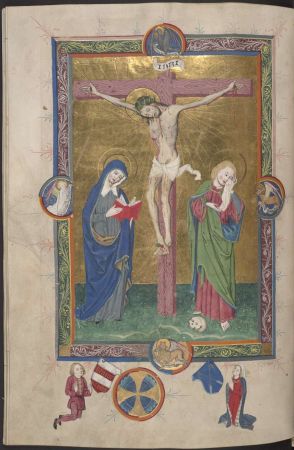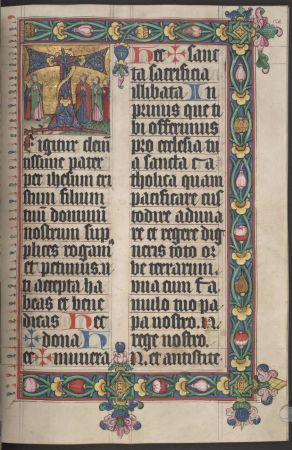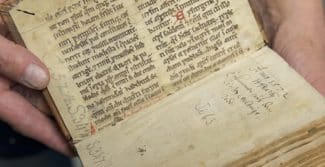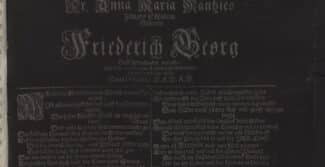16 October 2019
Dr Leonard Polonsky regards digitisation as a unique opportunity to protect precious, historically significant documents from decay or destruction while simultaneously making them freely accessible: ‘Digitisation enables us to secure all of this material and of course make it broadly available. It’s an opportunity you can’t resist.’ With this goal in mind, approximately 60 manuscripts from monasteries in Lower Saxony were digitised in the first year of the project, 34 of which are already accessible to the public on the project website.
One specimen with especially lavish ornamentation is the missal Cod. Guelf. 35 Helmst. from Lüchtenhof, the house of the Brethren of the Common Life in Hidesheim (see above). This missal, dating from 1462, was created by the Brethren for their own use in the Lüchtenhof, as an inscription inside the front cover shows. The costly parchment manuscript was probably paid for by Henning von Reden and his wife Ilse Barner, whose kneeling figures can be seen below the canon miniature along with their coat of arms. The House of Reden was an old aristocratic family in Lower Saxony, whose members played a significant role in the bishopric of Hildesheim.
Alongside eleven initials with miniatures and gilding, this canon miniature is the most artistically elaborate page in the codex. As usual, it shows Mary and John beneath the cross of Christ. The frame is adorned with the symbols of the four evangelists. The image introduces the Eucharistic prayer with which the priest re-enacts the sacrificial death of Christ in the Mass.
The text on the opposite page begins with an initial depicting a scene from the Book of Exodus. Moses causes a brazen serpent to be mounted on a pole to protect the children of Israel from venomous snakes in the desert. Medieval biblical exegetes regarded this as a prophetic allusion to the redemptive power of the cross.
All 529 images of the pages of this manuscript can be viewed in very high resolution on the project website.
Digitising manuscripts such as this enables a broader public to access these valuable cultural goods and simultaneously complements the HAB’s research into the holdings of late medieval monastic libraries in Lower Saxony. We will continue to report about the project’s progress on this site in the coming months.











